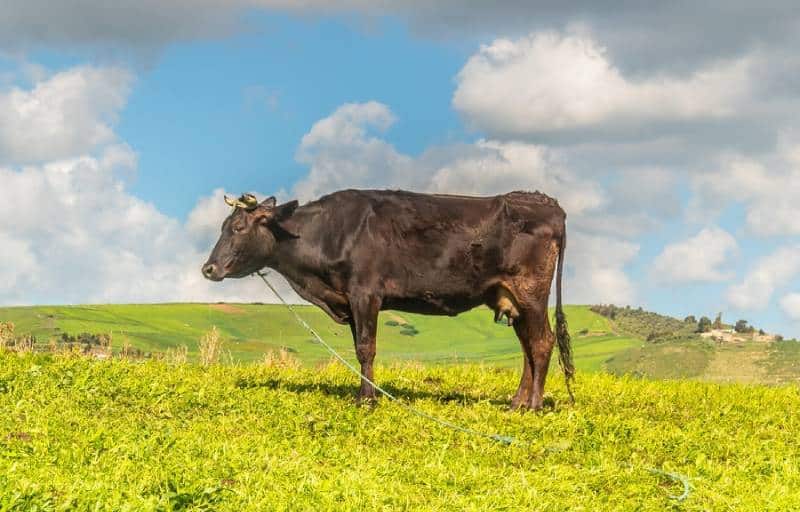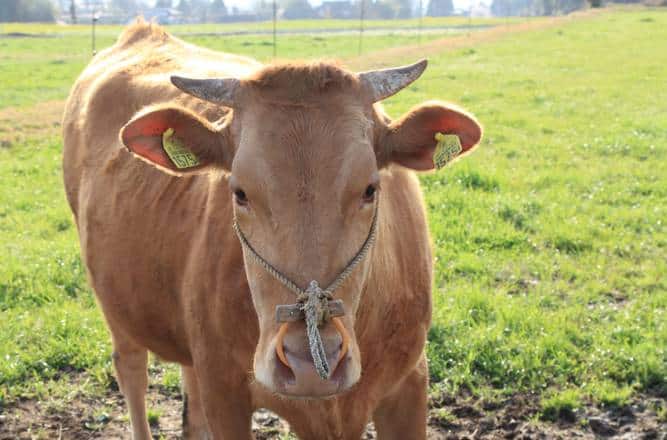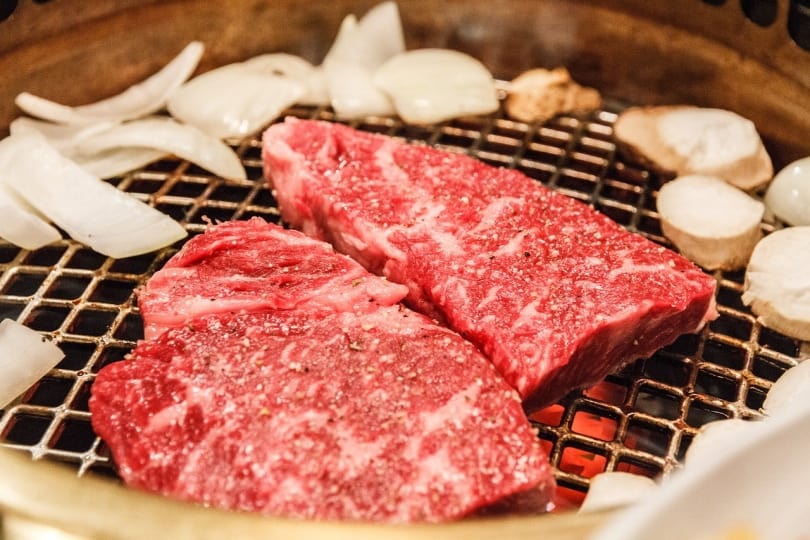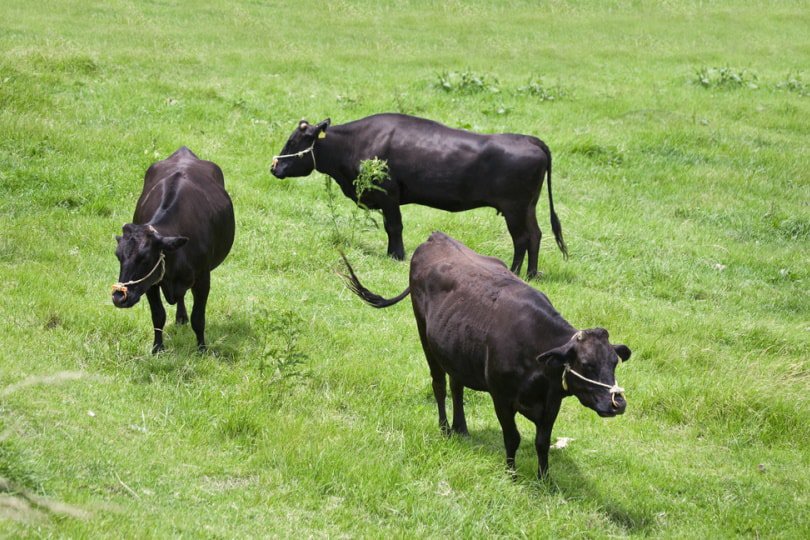Cattle were first introduced to Japan in the second century to help with rice cultivation, but due to the rugged terrain, cattle herds tended to be isolated and their spread through the country was fairly slow. But Japan is now known for producing some of the best, most sought-after beef in the world, and this prized beef can fetch incredibly high prices.
All Japanese beef cattle breeds are referred to as Wagyu: “Wa” means Japanese and “gyu” means cattle. There are four breeds of Wagyu, with only two, the Japanese Black and Japanese Brown, being available outside of Japan. Wagyu beef is world-renowned for its flavor and texture, and it is considered healthier than standard American beef.
Let’s take a deeper look at the six Japanese cattle breeds in existence.

The 6 Best Japanese Cattle Breeds
1. Japanese Black (Kuroge Washu)

The most famous of the Japanese cattle breeds, the Japanese Black was used primarily as a working breed in rice paddies prior to the 20th century and was certified as an indigenous breed in 1944. Almost 90% of the Wagyu stock in Japan is made up of Japanese Black, and the breed is known for producing some of the best beef in the world, with fine strips of fat, known as marbling, found even on the lean meats.
2. Japanese Brown (Akage Washu)

Raised primarily in the Kumamoto and Kochi regions, the Japanese Brown is the second most popular of the Wagyu breeds. The Kumamoto line is the most common, while the Kochi line consists of only a couple thousand cattle and is not found outside of Japan. The Japanese Brown was certified as an indigenous beef cattle in 1944. The breed is known for its low-fat content and lean meat, making it a healthier choice for health-conscious diners.
3. Japanese Polled (Mukaku Washu)
The Japanese Polled is available only in Japan and was produced through crossbreeding of the Scottish Aberdeen Angus and Japanese Black. It was designated as an indigenous breed in 1944 and is known for its high lean meat content and distinct Wagyu flavor. The breed is the least populated of all four Wagyu breeds, and only several hundred remain in existence in Japan today.
4. Japanese Shorthorn (Nihon Tankaku Washu)

The Japanese Shorthorn is only available in Japan. The breed is raised mostly in the Tohoku region of Japan, and its genetics were gradually improved upon by crossing it with the native cattle in the area. The Japanese Shorthorn was registered as an indigenous beef cattle in 1957 and is known for its unique, lean, mild-flavored meat and low-fat content.
5. Kuchinoshima
The Kuchinoshima is a critically endangered Japanese breed of small wild cattle. The breed is found only on the Kuchinoshima islands in southern Japan and is one of two small indigenous Japanese breeds that have never been crossed with Western cattle breeds. The breed originated when cattle escaped from farms in the early 1900s and became feral, but fewer than 100 of these cattle remain in existence today.
6. Mishima
Mishima is an endangered breed of feral Japanese cattle, and along with the Kuchinoshima, is one of only two breeds that have not been crossed with Western cattle. The breed is only found on the Mishma island in northern Japan and was designated as a Japanese National Treasure in 1928. The species is critically endangered, and only around 100 remain in existence today.
Related Read: 15 Fascinating and Fun Cow Facts You Never Knew

Why is Wagyu beef so expensive?

Wagyu beef is known for being more tender and juicy than standard American beef, with a distinct buttery flavor and unique marbling, with streaks of fat that run throughout the beef rather than just around it. The fat melts at a far lower temperature too, with a “melt-in-your-mouth” flavor that cannot be replicated by other beef. Wagyu beef is also considered healthier than other red meats, due to the mono-unsaturated to saturated fat ratio being higher in Wagyu than in other beef.
Wagyu beef can cost up to 10 times more than standard beef, but not just due to the texture and flavor. What makes Wagyu beef have that hefty price tag is the way that the cows are raised. Young Wagyu cattle are fed milk by hand and raised grazing on open pasture. Also, all Wagyu cattle are DNA tested and closely regulated by the Japanese government, and only the best genetics are allowed to reproduce.
Featured Image Credit: ymgerman, Shutterstock
